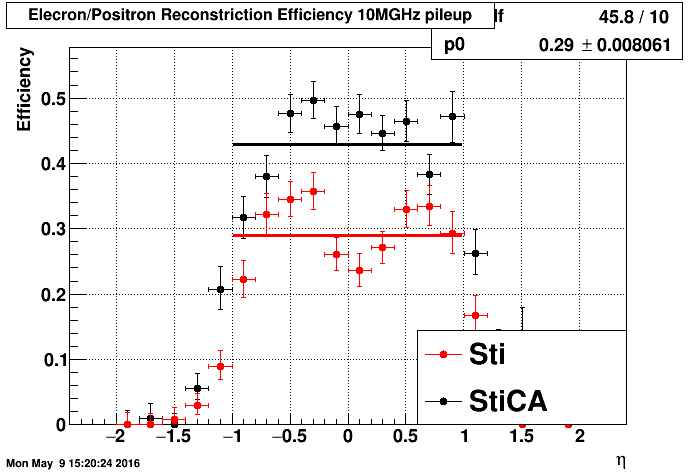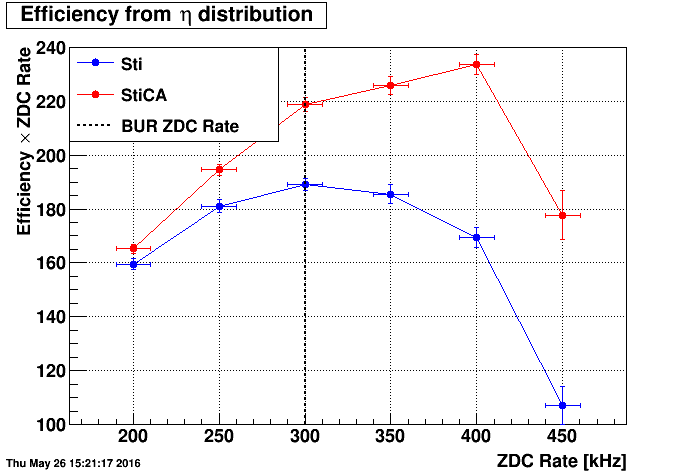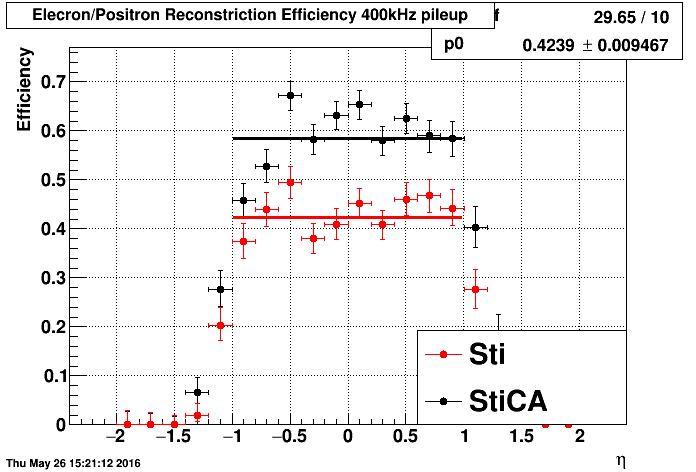Sti vs. StiCA comparison for pp->W->enu process
This study presents the comparison between Sti and StiCA track reconstruction efficiencies for electrons/positrons from the W decay in pp collissions at 510 GeV center of mass energies.
W->enu signal is produced using PYTHIA.
The reconstruction is done for two embedding cases:
- Signal embedded into PYTHIA pp510 minimum bias MC sample;
- Signal embedded into zero bias 2013 pp510 data.
In this case electron/positron reconstruction efficiency is same as W reconstruction efficiency. The efficiency is calculated simply based on the MC ID Truth information.
EMBEDDING INTO PYTHIA MC
For this case the embedding was done using different mixing parameters to simulate different collision rates.
Mixing was done using poisson probability of minimum bias event in each bunch crossing = collission rate x bunch crossing time
Then data was reconstructed using both Sti and StiCA reconstruction algorythms. The resuls are given here:
http://www.star.bnl.gov/~iraklic/pp2W/

The result shows that both Sti and StiCA have maximum in the number of reconstructed electrons as a function of the collission rate at about 8 MHz. StiCA yields about 20% more reconstructed electrons/positrons at this rate.
The BUR requested zdc rate line (300 kHz) shown on the plot is calculated using the ZDC crossection and Pyehit minimum bias process crossection, and it raises question about scaling the Collission rate to ZDC rate. Therefor the embeddin into data was done.
Another observation from the study is the dip in the electron reconstruction efficiency with Sti algorithm for mid rapidities at high collision rates, which is not observed with StiCA reconstruction:

EMBEDDING INTO ZERO BIAS pp200 GeV DATA
The zero bias data was segregated into sets of data that correspond to different ZDC rates [200, 250, 300, 350, 400] kHz withing 10 kHz window.
Results are shown here:
http://www.star.bnl.gov/~iraklic/pp2W/dataEmb/

Result shows that Sti has maximum at 300 kHz of ZDC rate which corresponds to the BUT requested rate for nex pp run. The StiCA shows about 15% higher yield in reconstructed electrons/positrons at that rate, and it seems to keep rizing but drops sharply after 400 kHz.
The above mentioned dip in the efficiency is less pronounced in this embedding but perheps hints of it are still seen:

- iraklic's blog
- Login or register to post comments
